Ensuring Physical Safety in Online Dealings
In today's digital age, engaging in online transactions has become a common practice. Whether you're buying a vintage guitar on an auction site or selling your old smartphone, the internet offers a convenient platform for these exchanges. However, with this convenience comes a host of potential risks that can jeopardize not just your finances but also your physical safety. It's essential to approach online dealings with a heightened sense of awareness and responsibility. So, how can you navigate these waters safely? In this article, we'll explore essential strategies and practices to safeguard your physical safety while engaging in online transactions. We'll emphasize the importance of awareness, technology, and personal responsibility, ensuring that you can enjoy the benefits of online dealings without compromising your safety.
Identifying potential dangers associated with online dealings is crucial. The internet, while a treasure trove of opportunities, can also be a breeding ground for scams, identity theft, and fraud. Imagine walking through a dark alley; you wouldn’t do it without looking over your shoulder, right? The same applies to online transactions. Common risks include:
- Scams: These can range from fake listings to sellers who take your money and disappear.
- Identity Theft: Providing personal information can lead to unauthorized access to your accounts.
- Fraud: This includes counterfeit products or services that don’t exist.
By recognizing these threats, you can take proactive steps to protect yourself and your hard-earned money.
Implementing safe transaction practices can significantly reduce risk. Think of it as putting on a seatbelt before driving; it's a simple action that can save you from potential harm. Here, we outline best practices for conducting online transactions, including secure payment methods and verifying seller credibility.
Choosing the right payment method is vital for safety. Just like you wouldn’t carry large sums of cash in your pocket, opting for secure payment options can protect you from fraud and unauthorized transactions. Some secure options include:
- Escrow Services: These act as intermediaries in transactions, ensuring that funds are released only when both parties fulfill their obligations.
- Credit Cards: Often come with built-in fraud protection features that can safeguard your financial information.
Escrow services act as a safety net in online transactions. Imagine you're buying a car online; you want to ensure the seller has the title before handing over the cash. Escrow services hold the funds until both parties meet their obligations. This not only protects your money but also builds trust between buyers and sellers. The benefits include:
- Reduced risk of scams
- Increased buyer and seller confidence
- Clear transaction guidelines
Credit cards often come with robust fraud protection features. This means that if something goes wrong, you can dispute the charge and potentially recover your money. It’s like having a safety net that catches you when you fall. Regularly monitoring your transactions is also crucial; just like checking your bank balance, keeping an eye on your credit card statements can help you catch any unauthorized charges early.
Before engaging in transactions, it’s essential to verify the credibility of sellers. This is akin to checking a restaurant's reviews before dining there. Methods for checking reviews, ratings, and other indicators of trustworthiness include:
- Reading customer feedback on platforms like eBay or Amazon.
- Checking social media for any red flags.
- Utilizing third-party review sites.
By doing your homework, you can avoid falling victim to unscrupulous sellers.
Safeguarding personal information is critical in online dealings. Think of your personal data as a precious gem; you wouldn’t leave it lying around for anyone to take. Strategies for protecting sensitive data and minimizing exposure to identity theft include:
Adjusting privacy settings on social media and online accounts can help protect personal information. Like closing your curtains at night, managing your privacy settings can keep prying eyes away. Regularly review your settings to ensure you're not oversharing information that could be exploited.
Phishing attempts can lead to significant security breaches. These are like baited traps designed to lure you in. Educating yourself on identifying phishing emails and messages empowers you to avoid falling prey to such tactics. Look out for suspicious links, unexpected attachments, and requests for personal information.
When online transactions involve in-person meetings, physical safety becomes paramount. Just as you wouldn’t walk into a stranger’s house without a plan, you should approach meetups with caution. Here are some tips on how to conduct safe meetups:
Selecting a public and well-lit location for meetups is essential for safety. Think coffee shops, busy parks, or even shopping malls. These are ideal places for meetings because they are populated and provide a sense of security. Always consider factors like visibility and the time of day when choosing a location.
Having a companion during in-person meetups can enhance safety. It's like having a buddy system; there’s strength in numbers. This not only deters potential threats but also provides support if something goes awry. Always prioritize your safety and never meet alone if you can avoid it.
Q: How can I protect myself from scams when buying online?
A: Always use secure payment methods, verify seller credibility, and trust your instincts. If something feels off, it probably is.
Q: What should I do if I suspect I've been a victim of identity theft?
A: Report it immediately to your bank and credit card companies, change your passwords, and consider placing a fraud alert on your credit report.
Q: Is it safe to meet a seller in person?
A: Yes, as long as you choose a public place and bring a friend along for added safety.
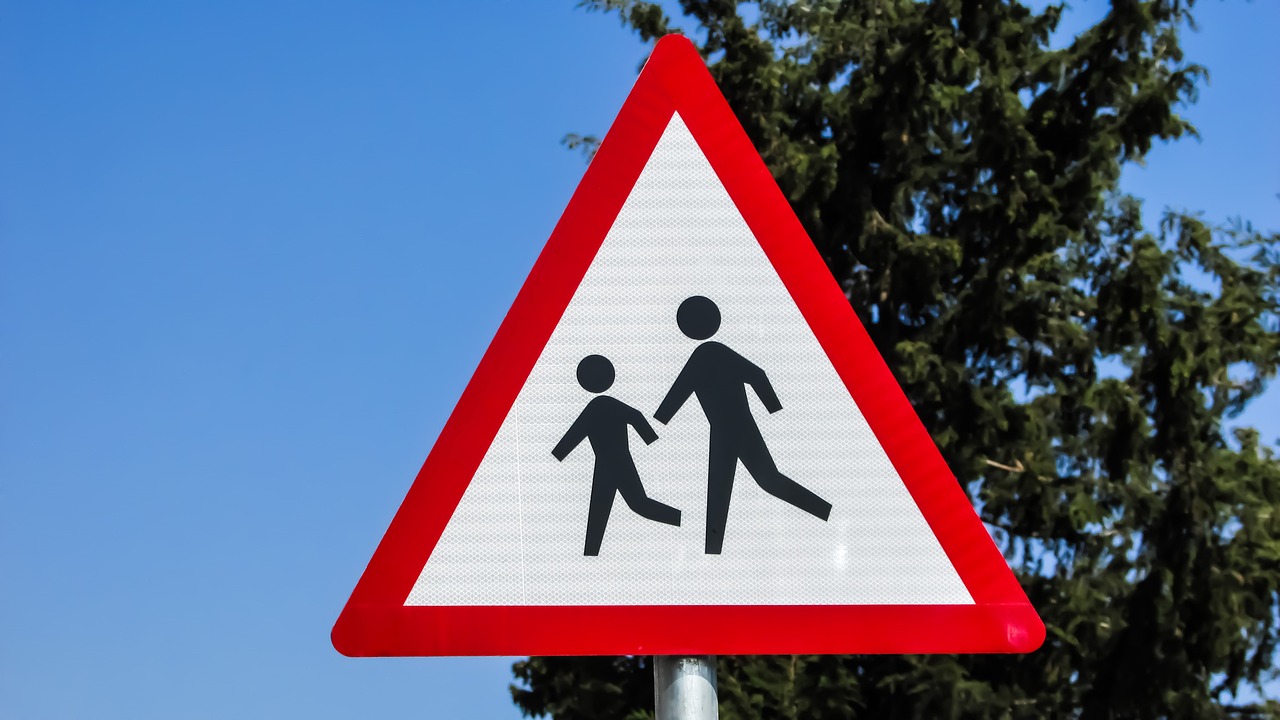
Understanding Online Risks
In today's digital age, engaging in online dealings has become as common as grabbing a coffee on the way to work. However, just like that coffee shop on the corner, not all online platforms are safe or trustworthy. It's crucial to understand the potential dangers lurking in the vast expanse of the internet. The reality is, with every click, there might be risks that could jeopardize not just your finances but also your personal safety.
One of the most prevalent threats is scams. These can range from fake websites selling nonexistent products to phishing schemes that trick you into providing sensitive information. Imagine walking into a store only to find out it's a front for a scam operation; that’s the online equivalent. Scammers are becoming increasingly sophisticated, often creating websites that look legitimate at first glance. They prey on unsuspecting buyers, and before you know it, your money is gone.
Another significant risk is identity theft. This occurs when someone steals your personal information—like your Social Security number or bank details—with the intent to commit fraud. It’s like someone breaking into your home and stealing your identity instead of your belongings. According to recent statistics, millions of people fall victim to identity theft each year, leading to financial loss and emotional distress. Protecting your personal information is paramount.
Moreover, fraud is an ever-present danger in online transactions. Fraud can take many forms, from fake listings on auction sites to counterfeit products being sold as genuine. The internet is a marketplace where anyone can set up shop, which means it’s essential to keep your guard up. Always ask yourself: “Is this too good to be true?” If it is, it probably is.
To better illustrate the various online risks, consider the following table:
| Type of Risk | Description | Example |
|---|---|---|
| Scams | Fraudulent schemes designed to deceive users. | Fake online stores selling nonexistent products. |
| Identity Theft | Stealing personal information for malicious purposes. | Using someone's Social Security number to open credit accounts. |
| Fraud | Deceptive practices leading to financial loss. | Counterfeit goods sold as authentic. |
Understanding these risks is the first step toward safeguarding your physical safety in online dealings. By becoming aware of the potential threats and educating yourself on how to spot them, you can navigate the online marketplace with confidence. Remember, just like you wouldn’t walk into a dark alley at night, you should also be cautious when traversing the digital landscape. Stay informed, stay vigilant, and always prioritize your safety!
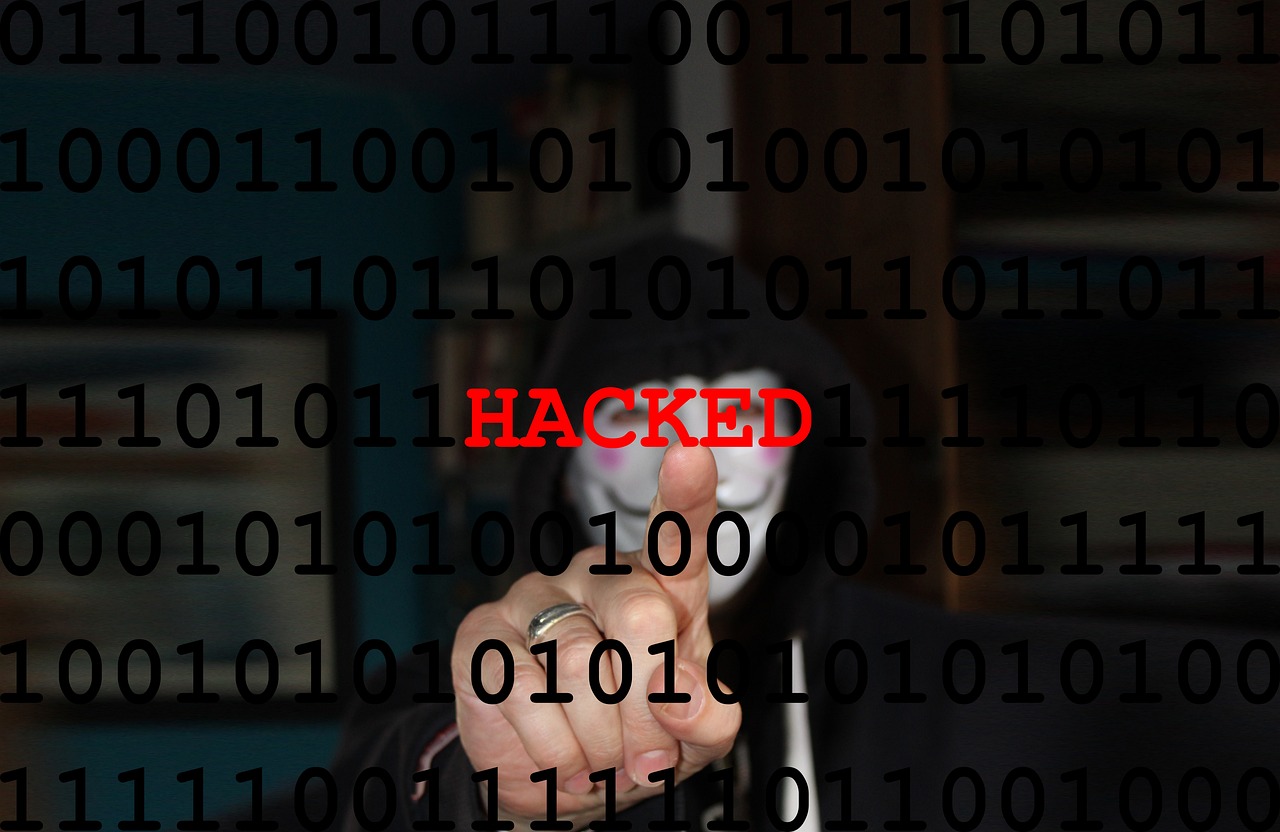
Safe Transaction Practices
When it comes to engaging in online transactions, ensuring safety should be at the forefront of your mind. With the digital marketplace booming, the risk of encountering scams and fraud is ever-present. But fear not! By adopting some , you can significantly reduce these risks and enjoy a more secure online experience. So, what are these practices, and how can you implement them effectively?
First and foremost, it's crucial to choose the right payment methods. Not all payment options are created equal, and some offer more protection than others. For instance, using escrow services can provide a safety net for both buyers and sellers. These services act as a trusted intermediary, holding onto the funds until both parties fulfill their obligations. Imagine it as a referee in a game; they ensure that the rules are followed and that everyone plays fair. Escrow services can help prevent disputes and protect against fraud, making them an excellent choice for high-value transactions.
In addition to escrow services, leveraging the protections that come with credit cards is another smart move. Most credit cards offer built-in fraud protection, allowing you to dispute unauthorized transactions easily. Think of your credit card as a shield; it can block unwanted attacks on your finances. Regularly monitoring your transactions is also essential. By keeping an eye on your statements, you can catch any suspicious activity early and take action before it escalates.
Another critical aspect of safe transaction practices is verifying the credibility of sellers. Before committing to a purchase, take a moment to research the seller. Look for reviews, ratings, and feedback from previous customers. This process can be likened to checking the reputation of a restaurant before dining there; you wouldn't want to risk a bad meal, right? Utilize platforms that aggregate reviews and ratings to get a clearer picture of the seller's trustworthiness. If a seller has numerous positive reviews, it’s a good sign that they are reliable. Conversely, if you come across a plethora of negative feedback, it’s best to steer clear.
Additionally, consider using platforms that offer buyer protection policies. These policies can provide an extra layer of security, ensuring that you can recover your funds in the event of a dispute. Always read the terms and conditions to understand what protections are available to you. Just like reading the fine print in a contract, knowing your rights can save you from potential headaches later on.
In summary, safe transaction practices are all about being proactive and informed. By choosing secure payment methods, verifying seller credibility, and utilizing buyer protection policies, you can significantly minimize your risk while engaging in online dealings. Remember, the digital world can be a bit like a wild west; staying vigilant and prepared is your best defense against unscrupulous players.
- What is an escrow service? Escrow services act as a third-party intermediary that holds funds until both the buyer and seller meet their obligations in a transaction.
- How can I verify a seller's credibility? Check reviews and ratings on various platforms, look for feedback from previous customers, and ensure the seller has a professional presence online.
- What should I do if I suspect fraud? Contact your bank or credit card provider immediately to report the suspicious activity and take necessary steps to secure your accounts.
- Are there any payment methods I should avoid? Yes, avoid using wire transfers or payment methods that do not offer buyer protection. Stick to credit cards or reputable payment services.
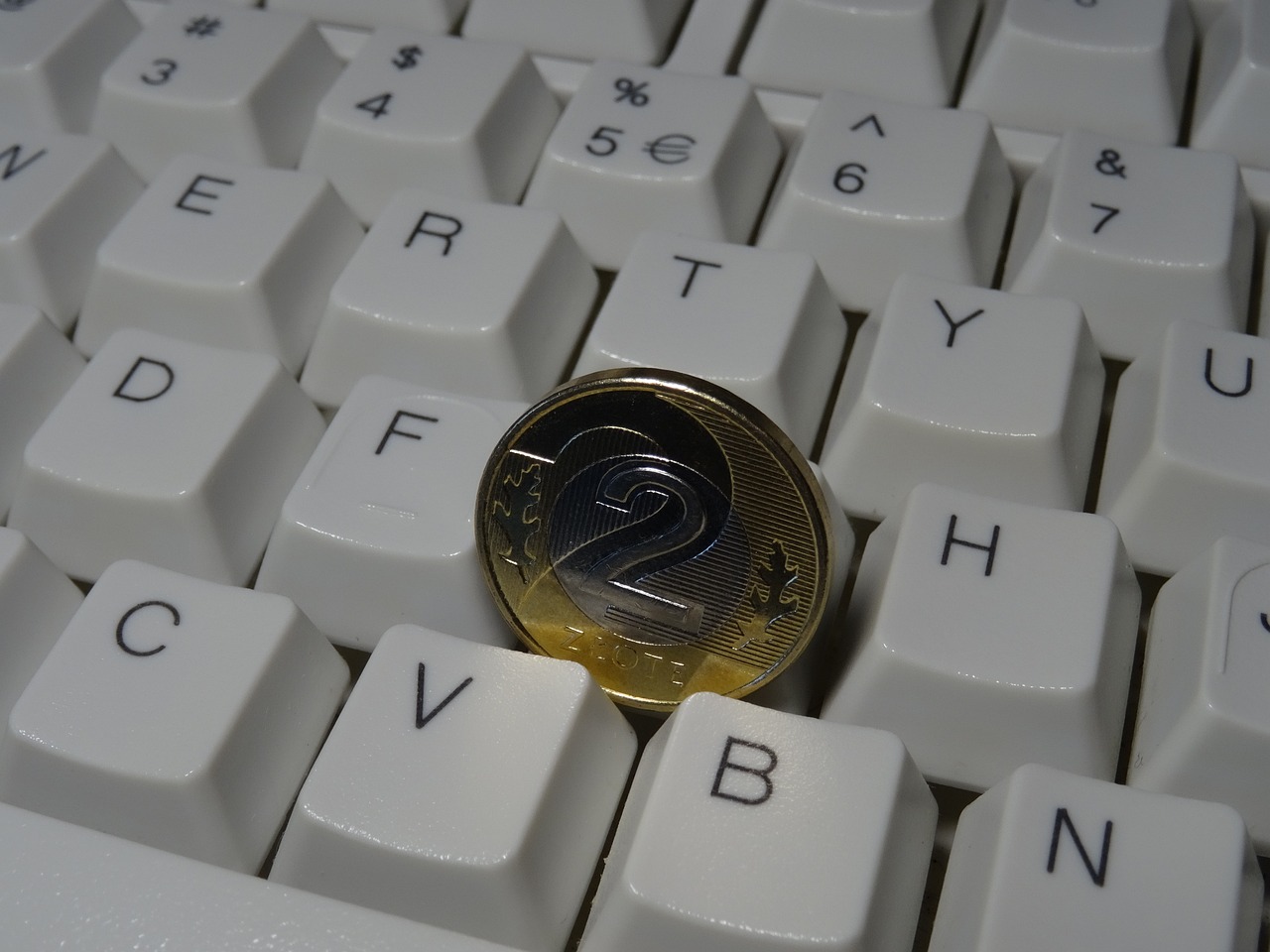
Using Secure Payment Methods
This article explores essential strategies and practices to safeguard physical safety while engaging in online transactions, emphasizing the importance of awareness, technology, and personal responsibility.
Identifying potential dangers associated with online dealings is crucial. This section discusses common risks such as scams, identity theft, and fraud, helping readers recognize threats to their physical safety.
Implementing safe transaction practices can significantly reduce risk. Here, we outline best practices for conducting online transactions, including secure payment methods and verifying seller credibility.
Choosing the right payment method is vital for safety. In the digital marketplace, where transactions happen with just a few clicks, understanding secure payment options can be the difference between a successful deal and a potential disaster. Secure payment methods not only protect your financial information but also provide peace of mind during online dealings.
When it comes to secure payments, consider these options:
- Escrow Services: These services act as a middleman, holding funds until both parties meet their obligations. By using escrow, you ensure that the seller only receives payment when you confirm the item is as described.
- Credit Cards: Most credit cards offer built-in fraud protection. This means that if you encounter a fraudulent transaction, you can dispute the charge and potentially get your money back.
- PayPal and Other Digital Wallets: These platforms provide an additional layer of security, as they don’t require you to share your bank details directly with sellers.
Now, let’s dive deeper into two of the most effective secure payment methods: escrow services and credit card protections.
Escrow services are designed to protect both buyers and sellers in a transaction. When you use an escrow service, the buyer sends their payment to the escrow account instead of directly to the seller. The funds remain there until the seller fulfills their part of the deal. Only after the buyer confirms receipt and satisfaction with the item does the escrow service release the funds to the seller. This process not only safeguards your money but also builds trust between the parties involved.
Credit cards often come with robust fraud protection features. For instance, if you notice unauthorized charges, you can report them to your credit card company, who will usually investigate and reverse the transaction. Moreover, many credit cards offer additional benefits like purchase protection, which covers damage or theft of items purchased within a specific timeframe. To maximize these protections, it’s essential to regularly monitor your transactions and report any suspicious activity immediately.
In conclusion, utilizing secure payment methods is a fundamental step in ensuring your physical safety during online transactions. By choosing the right methods, you not only protect your finances but also enhance the overall security of your online dealings.
Safeguarding personal information is critical in online dealings. This section highlights strategies for protecting sensitive data and minimizing exposure to identity theft.
Adjusting privacy settings on social media and online accounts can help protect personal information. Here, we discuss how to effectively manage privacy settings to enhance safety.
Phishing attempts can lead to significant security breaches. This section educates readers on identifying phishing emails and messages, empowering them to avoid falling prey to such tactics.
When online transactions involve in-person meetings, physical safety becomes paramount. This section provides tips on how to conduct safe meetups, including location selection and personal safety precautions.
Selecting a public and well-lit location for meetups is essential for safety. This part discusses ideal places for meetings and factors to consider when choosing a location.
Having a companion during in-person meetups can enhance safety. This section emphasizes the importance of not meeting alone and the benefits of having a trusted friend accompany you.
Q: What are the safest payment methods for online transactions?
A: The safest payment methods include escrow services, credit cards, and reputable digital wallets like PayPal. These options provide added security and protection against fraud.
Q: How can I verify a seller's credibility?
A: You can verify a seller's credibility by checking their reviews, ratings on platforms, and looking for any red flags such as poor communication or lack of transparency.
Q: What should I do if I suspect a phishing attempt?
A: If you suspect a phishing attempt, do not click on any links or provide personal information. Report the email or message to your email provider and delete it immediately.

Escrow Services Explained
When it comes to online transactions, ensuring that both parties fulfill their obligations can be a daunting task. This is where escrow services come into play. Think of an escrow service as a trusted third party that holds onto the funds during a transaction. It’s like having a referee in a game; they ensure that both teams play fair and follow the rules. In the context of online dealings, escrow services provide a layer of security that can significantly reduce the risk of fraud.
So, how does it work? When you decide to purchase an item or engage in a service, you deposit your payment into the escrow account rather than sending it directly to the seller. The seller, in turn, provides the goods or services as agreed. Only after you confirm that you have received what you paid for does the escrow service release the funds to the seller. This process ensures that neither party can take advantage of the other. If the seller fails to deliver, you can dispute the transaction, and your funds remain safe until the issue is resolved.
There are several benefits to using escrow services:
- Security: Your money is protected until you receive what you paid for.
- Trust: It builds trust between buyers and sellers, especially in unfamiliar transactions.
- Dispute Resolution: Most escrow services offer mediation in case of disagreements, providing a clear path to resolution.
In addition to these benefits, it’s essential to choose a reputable escrow service. Look for services that are well-reviewed and have a history of successful transactions. Be wary of any service that asks for personal information beyond what is necessary for the transaction, as this could be a red flag for potential scams.
In summary, escrow services act as a safety net in online transactions, ensuring that both parties uphold their end of the deal. By using these services, you can conduct transactions with greater peace of mind, knowing that your funds are secure until you receive your goods or services as promised.

Credit Card Protections
When it comes to online transactions, utilizing a credit card can be a game changer in terms of safety. Many people are unaware of the extensive protections that come with using credit cards, which can serve as a shield against fraud and unauthorized transactions. Imagine your credit card as a knight in shining armor, ready to defend your finances against the dragons of online scams. With features like fraud detection, chargeback options, and zero liability policies, credit cards offer a level of security that can significantly reduce your risk while shopping online.
One of the most important features of credit card protection is the fraud detection system. Most credit card companies employ advanced algorithms that monitor your spending patterns. If they detect any suspicious activity, such as a transaction that falls outside your typical spending habits, they will alert you immediately. This proactive approach can help you catch potential fraud before it spirals out of control. Think of it as having a personal security guard who is always on the lookout for threats to your financial well-being.
Additionally, if you ever find yourself in a situation where a transaction was made without your permission, credit cards typically offer a zero liability policy. This means that you are not responsible for any unauthorized charges, provided you report them in a timely manner. This policy acts like a safety net, ensuring that even if the worst happens, you won't be left high and dry. However, it's crucial to keep an eye on your statements and report any discrepancies as soon as possible to take full advantage of this protection.
Another significant aspect of credit card protection is the chargeback feature. If you purchase a product or service that is not delivered as promised, you can dispute the charge with your credit card issuer. This process allows you to reclaim your money if the seller fails to resolve the issue. It's like having a safety valve that lets you pull back your hard-earned cash when something goes awry. To initiate a chargeback, you typically need to provide documentation of your attempts to resolve the issue with the seller, so always keep those records handy!
To maximize your credit card protections, it’s essential to regularly monitor your transactions. Set aside a few minutes each week to review your account statements. This simple habit can help you catch unauthorized transactions early and take action swiftly. Moreover, consider setting up alerts through your credit card provider. You can receive notifications for transactions over a certain amount or when your card is used for online purchases. These alerts act as an additional layer of security, keeping you informed and aware of your financial activity.
In summary, using a credit card for online transactions not only simplifies your purchasing experience but also provides a robust set of protections that can safeguard your finances. By understanding and leveraging these features, you can shop online with confidence, knowing that your credit card is there to protect you in case of mishaps. Just remember, while technology offers fantastic tools for safety, your vigilance is equally important. Always stay alert and informed, and your online shopping experience can be both enjoyable and secure.
- What should I do if I notice unauthorized transactions on my credit card? Immediately contact your credit card issuer to report the fraudulent activity and request a replacement card.
- Are all credit cards equal in terms of fraud protection? No, different credit card issuers offer varying levels of protection, so it’s wise to research and choose a card that best suits your needs.
- How can I ensure my credit card information is safe when shopping online? Look for secure payment gateways, use reputable websites, and enable alerts for transactions on your credit card.

Verifying Seller Credibility
When it comes to online transactions, verifying the credibility of sellers is akin to checking a map before embarking on a road trip. You wouldn’t want to find yourself lost or in a sketchy neighborhood, right? The same principle applies when purchasing goods or services online. Ensuring that you’re dealing with a trustworthy seller can save you from potential headaches, scams, or even financial loss. So, how do you navigate this digital landscape to ensure you’re making a safe choice?
First and foremost, check for reviews and ratings. Most online platforms allow buyers to leave feedback about their experiences. Look for sellers with a high rating and a substantial number of reviews. If a seller has only a handful of reviews or a low rating, it might be a red flag. But don’t just skim through the ratings; take the time to read the comments. Look for patterns in the feedback—are there consistent complaints about late shipping, poor product quality, or unresponsive customer service? This can give you a clearer picture of what to expect.
Another effective method is to research the seller's history. You can often find this information on their profile page or through a simple Google search. Look for any past disputes or issues reported about them. If the seller has a history of complaints or has been flagged for fraudulent activities, it’s best to steer clear. Additionally, you might want to check if the seller has a professional website or social media presence. A well-established online presence can be a good indicator of credibility.
Moreover, consider using third-party verification services. Some websites specialize in vetting sellers and providing credibility scores based on various factors, including transaction history and user feedback. Utilizing these services can add an extra layer of security to your buying process. If you’re using a marketplace platform, they often have their own verification systems in place, so be sure to take advantage of those tools.
Lastly, don’t hesitate to reach out directly to the seller with any questions or concerns you may have. A legitimate seller will be responsive and willing to provide additional information about their products or services. If you receive vague answers or no response at all, consider that a warning sign. Communication is key in establishing trust, and if a seller is uncommunicative, it might be best to look elsewhere.
In summary, verifying seller credibility is a crucial step in ensuring your safety during online transactions. By conducting thorough research, checking reviews, utilizing third-party services, and communicating directly with the seller, you can significantly reduce your risk of falling victim to scams. Remember, it’s always better to be cautious than to regret a hasty decision!
- What should I do if I encounter a suspicious seller? If you find a seller who seems suspicious, report them to the platform you are using and consider not proceeding with the transaction.
- How can I tell if reviews are fake? Look for patterns in reviews. If all reviews are overly positive without any constructive criticism, they might be fabricated. Also, check the reviewer’s history for authenticity.
- Is it safe to buy from sellers with no reviews? It’s generally riskier to buy from sellers with no reviews. If you must, try to verify their credibility through other means, such as direct communication or third-party services.
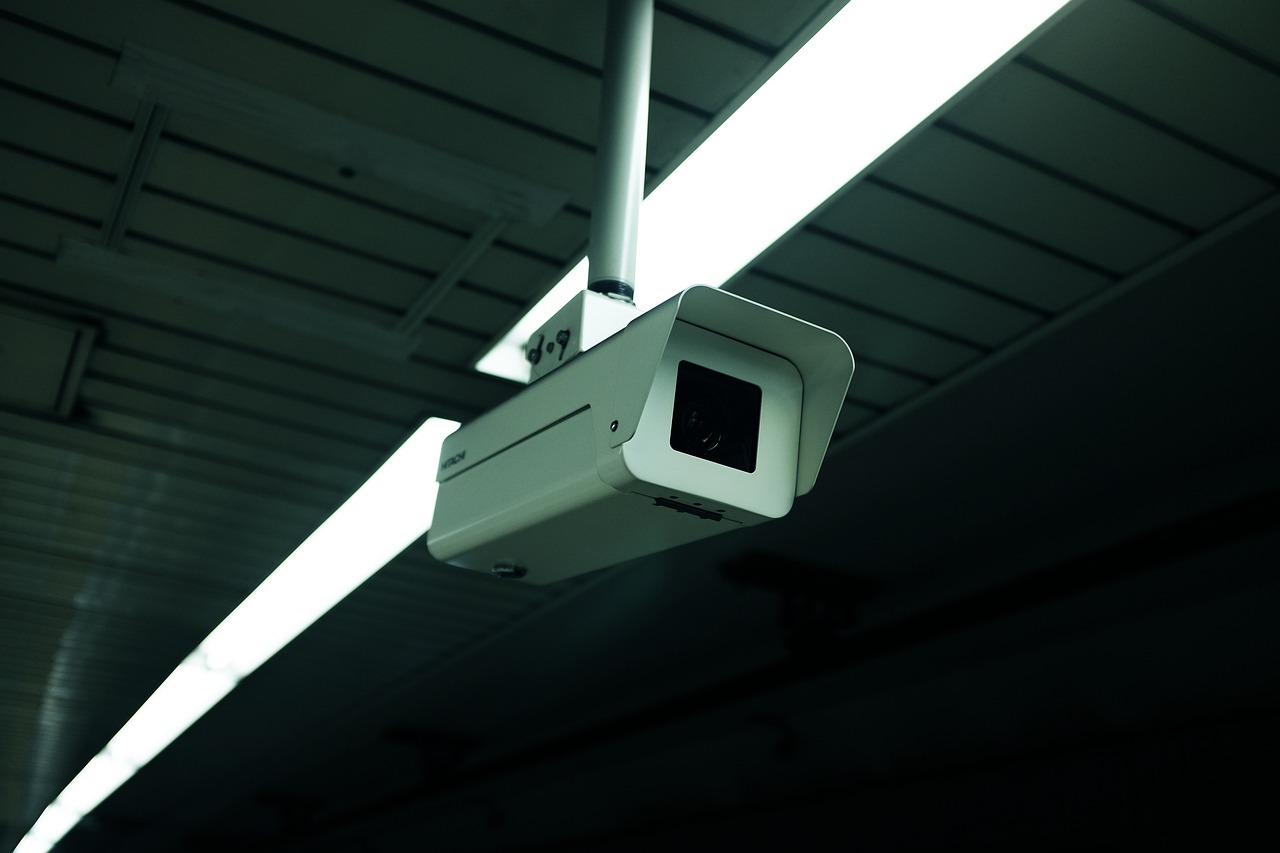
Protecting Personal Information
In today's digital world, protecting your personal information is not just a good idea; it's an absolute necessity. With the rise of online transactions, identity theft has become a common threat that can wreak havoc on your life. Imagine waking up one day to find that someone has stolen your identity and is racking up debts in your name. The thought alone is enough to send chills down your spine! So, how can we safeguard our sensitive data while navigating the vast online marketplace?
First and foremost, it's crucial to understand that your personal information is like a treasure chest; the more valuable it is, the more likely someone will try to get their hands on it. This includes everything from your name and address to your credit card numbers and social security details. To minimize exposure to identity theft, it's essential to adopt a proactive approach to online privacy. One effective way to do this is by utilizing the privacy settings available on social media platforms and other online accounts.
Many users often overlook these settings, thinking that their information is automatically secure. However, taking a few minutes to adjust your privacy settings can significantly enhance your safety. For example, you can limit who can see your posts, restrict access to your friend list, and even control who can send you messages. By doing this, you create a protective barrier around your personal information, making it harder for potential thieves to access it.
Another critical aspect of protecting your personal information is recognizing phishing attempts. Phishing is a deceptive tactic used by cybercriminals to trick you into revealing sensitive information. They often send emails or messages that appear legitimate, luring you into clicking on malicious links or providing personal details. To help you identify these scams, here are some red flags to watch out for:
- Generic Greetings: Emails that start with "Dear Customer" instead of your name.
- Urgent Language: Messages that create a sense of urgency, pressuring you to act quickly.
- Suspicious Links: Hover over links to see their actual destination; if it looks fishy, don't click!
- Unusual Requests: Legitimate companies will never ask for sensitive information via email.
By being aware of these signs, you empower yourself to avoid falling prey to such tactics. Remember, if something seems too good to be true, it probably is. Always double-check the source before providing any personal information.
In conclusion, protecting your personal information is a multifaceted endeavor that requires vigilance and proactive measures. By adjusting your privacy settings, recognizing phishing attempts, and being cautious about the information you share online, you can significantly reduce your risk of identity theft. It's like having a sturdy lock on your treasure chest; it may not guarantee complete safety, but it sure makes it a lot harder for thieves to get in!
Q: What should I do if I think my personal information has been compromised?
A: If you suspect your information has been compromised, immediately change your passwords, monitor your accounts for unauthorized transactions, and consider placing a fraud alert on your credit report.
Q: How can I tell if an email is a phishing attempt?
A: Look for generic greetings, urgent language, suspicious links, and unusual requests for information. If in doubt, contact the company directly using contact information from their official website.
Q: Are there any tools to help protect my personal information online?
A: Yes, there are various tools available, including password managers, VPNs, and identity theft protection services that can help safeguard your information.
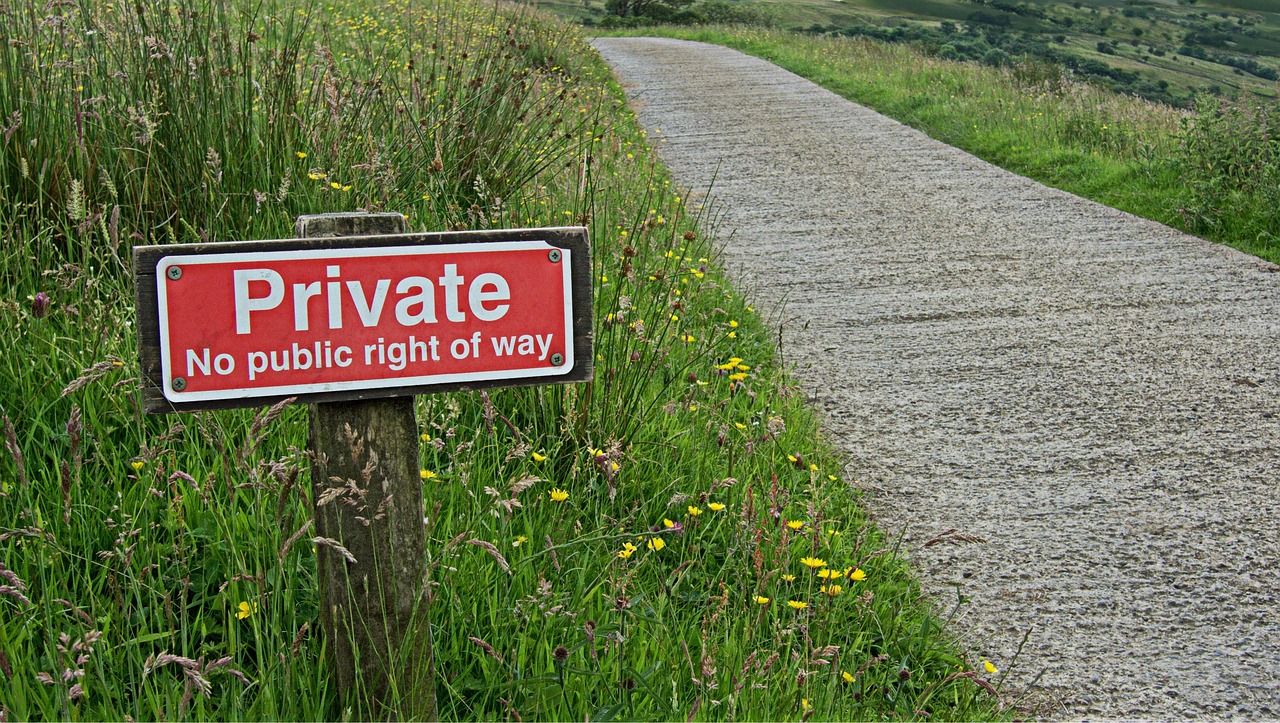
Utilizing Privacy Settings
In today's digital age, where information flows freely and rapidly, protecting your personal data has never been more crucial. Privacy settings on various platforms are your first line of defense against unwanted exposure. Think of these settings as the locks on your doors; they help keep intruders out while allowing you to control who has access to your personal space. By taking the time to adjust these settings, you can significantly reduce the risk of identity theft and unwanted attention.
Most social media platforms and online services offer a range of privacy options. For instance, you can often set your profile to private, limiting who can see your posts and personal information. But it doesn’t stop there! You should also regularly review your friend lists and followers, removing anyone who seems suspicious or whom you no longer interact with. This way, you’re not just locking your doors but also ensuring that you know who has a key.
Here are some important aspects to consider when utilizing privacy settings:
- Profile Visibility: Adjust your profile visibility settings to ensure that only friends or approved followers can see your personal information.
- Location Sharing: Turn off location sharing features on social media apps. You don’t want everyone knowing your whereabouts, especially when you’re out and about.
- Data Sharing: Be cautious about app permissions. Regularly review which apps have access to your data and revoke permissions for any that seem unnecessary.
Moreover, it’s important to understand that privacy settings are not a one-time fix. Just like your home security system, they require regular maintenance. Social media platforms frequently update their privacy policies and settings, so it’s wise to check back periodically. Make it a habit to review your settings every few months. This not only keeps your information secure but also helps you stay informed about any new features that could enhance your privacy.
Lastly, consider educating yourself about the specific privacy settings of the platforms you use most. Many sites offer detailed guides or FAQs on how to navigate their privacy features. Taking the time to familiarize yourself with these tools can empower you to manage your online presence effectively. Remember, your safety and privacy are in your hands, and utilizing these settings is a proactive step towards safeguarding your personal information.
Q1: How often should I check my privacy settings?
A1: It's advisable to check your privacy settings every few months, especially after any major updates from the platforms you use.
Q2: Can I make my social media profile completely private?
A2: Yes, most social media platforms allow you to set your profile to private, limiting access to only those you approve.
Q3: What should I do if I suspect my account has been compromised?
A3: Immediately change your password, enable two-factor authentication, and review your privacy settings to ensure your information is secure.
Q4: Are there any tools to help manage privacy settings across multiple platforms?
A4: Yes, there are various privacy management tools available that can help you monitor and adjust your settings across different social media platforms.
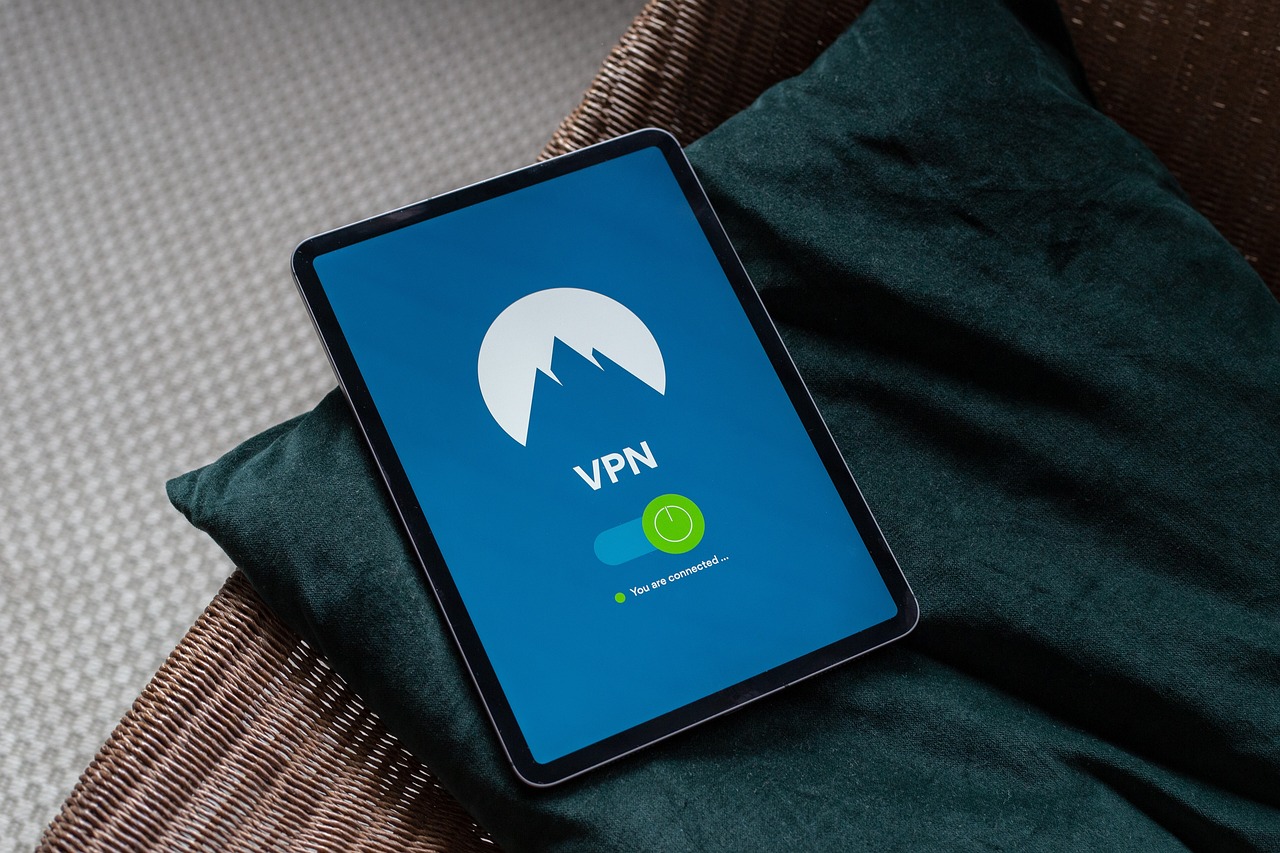
Recognizing Phishing Attempts
In today's digital age, where our lives are increasingly intertwined with the internet, the threat of phishing attempts looms larger than ever. Phishing is a deceptive practice where malicious actors impersonate legitimate entities to trick individuals into revealing sensitive information, such as passwords, credit card numbers, or personal details. But how can you spot these sneaky scams before they ensnare you? It’s like navigating through a minefield; one wrong step, and you could find yourself in a world of trouble.
The first thing to look out for is the source of the communication. Phishing attempts often come in the form of emails or messages that appear to be from reputable companies. However, a closer inspection may reveal telltale signs of fraud. For instance, check the sender's email address. Is it from a suspicious domain? Legitimate companies usually use their official domains, so be wary of any discrepancies. Furthermore, phishing emails often contain generic greetings like "Dear Customer" instead of your actual name. This lack of personalization can be a red flag.
Next, pay attention to the urgency of the message. Phishing scams frequently create a sense of panic or urgency, urging you to act quickly. They might say your account will be suspended unless you verify your information immediately. This tactic is designed to cloud your judgment and make you act without thinking. Remember, if it feels rushed, take a step back. Legitimate organizations typically allow time for you to respond and will never pressure you into providing sensitive information.
Another common tactic used in phishing attempts is the inclusion of malicious links. These links may look legitimate at first glance, but they often redirect you to fraudulent websites designed to steal your information. Hover over any link before clicking it to reveal the actual URL. If it looks suspicious or doesn't match the company's official website, don't click it! You wouldn’t jump into a car with a stranger just because they told you it was a taxi, right? The same principle applies here.
Additionally, be cautious of any attachments. Phishing emails may include files that, once opened, can install malware on your device. If you receive an unexpected attachment, even from someone you know, double-check before opening it. It’s always better to be safe than sorry. Think of it as a safety net; it might seem cumbersome at times, but it protects you from potential harm.
To arm yourself against phishing, consider utilizing security software that includes phishing detection features. Many antivirus programs can help identify and block phishing attempts before they reach your inbox. Moreover, keep your software and operating systems updated to ensure you have the latest security patches. This is akin to locking your doors and windows at night; it adds an extra layer of protection against intruders.
Finally, if you ever suspect that you’ve fallen victim to a phishing attack, don’t panic. Immediately change your passwords and contact the relevant institutions to inform them of the situation. The sooner you act, the better your chances of mitigating any potential damage. Think of it as putting out a small fire before it engulfs your entire house.
In conclusion, recognizing phishing attempts is crucial for safeguarding your personal information. By staying vigilant and aware of the signs of phishing, you can navigate the online world with greater confidence and security. Remember, when it comes to your safety, it’s always better to be cautious than to regret.
- What should I do if I receive a suspicious email? Always verify the sender's email address and avoid clicking on any links or attachments. If in doubt, contact the company directly through their official channels.
- Can I report phishing attempts? Yes, you can report phishing emails to the company being impersonated and to your email provider. Many organizations have dedicated teams to handle such reports.
- How can I protect myself from phishing attacks? Use strong, unique passwords, enable two-factor authentication, and regularly update your security software to enhance your protection against phishing.

Physical Safety During Meetups
When you're engaging in online transactions that require a face-to-face meeting, ensuring your physical safety becomes a top priority. Imagine you're about to meet someone you've only interacted with through a screen; it's a bit like stepping into the unknown, isn't it? To make sure you don’t walk into a potentially dangerous situation, there are several strategies you can adopt to keep yourself safe and sound.
First and foremost, choosing the right meeting location is crucial. Opt for a place that is well-lit and populated, such as a coffee shop or a public park. Think of it as choosing a safe harbor before setting sail into uncharted waters. You want to be surrounded by people, not isolated in a quiet corner. A busy environment not only deters ill intentions but also provides a sense of security. Additionally, make sure to inform a friend or family member about your meeting details, including the time and location. This way, someone is aware of where you are, acting as an added layer of protection.
Another important aspect is to bring a friend along with you. Having a companion can significantly enhance your safety. Picture it like having a trusty sidekick by your side—together, you're a team against any potential risks. Not only does this make you feel more secure, but it also sends a message to the person you're meeting that you’re cautious and aware of your surroundings. If they seem hesitant about your safety measures, it might be a red flag worth considering.
While you’re at the meetup, maintain a healthy level of awareness. Keep your phone charged and accessible, so you can quickly reach out for help if needed. It's also wise to engage in conversation that keeps you focused on the present rather than getting lost in the moment. You might even want to have your friend sit at a nearby table, subtly keeping an eye on the situation without being intrusive. This way, you can enjoy the meeting while ensuring that someone is looking out for you.
Lastly, trust your instincts. If something feels off during the meetup, don’t hesitate to cut the meeting short. Just like a seasoned sailor knows when to turn back to avoid a storm, you should feel empowered to prioritize your safety. Always remember that no deal is worth compromising your well-being. If you have any doubts, it’s perfectly acceptable to walk away. Your safety comes first, and there will always be other opportunities.
- What should I do if I feel unsafe during a meetup?
If you feel uncomfortable or unsafe, trust your instincts and leave the situation immediately. Don’t hesitate to call someone for help or alert authorities if necessary. - Is it safe to meet someone at their home?
It's generally advisable to avoid meeting at someone's home for the first time. Opt for public places instead, where you can feel more secure and have more options to leave if needed. - How can I verify the identity of the person I'm meeting?
Before the meetup, do some research on the person. Check their online profiles, look for reviews, and consider video chatting before meeting in person to ensure they are who they claim to be.

Choosing Safe Meeting Locations
When it comes to meeting someone for an online transaction, choosing the right location can make all the difference in ensuring your safety. Imagine stepping into a café bustling with people, where the aroma of fresh coffee fills the air—this is not just a cozy spot; it’s a strategic choice. Public places such as coffee shops, libraries, or shopping malls are ideal because they are often crowded, well-lit, and monitored by security cameras, which can deter any potential ill intentions.
It’s essential to consider a few factors when selecting a meeting spot. First, think about visibility. You want a location where you can be seen and where others can see you. This not only provides a sense of security but also increases the likelihood that someone will intervene if something goes awry. Second, ensure the location is familiar to you. Meeting in a place you know well can help you feel more comfortable and alert. If you’re not familiar with the area, do a quick online search to find reputable spots that others have recommended.
Moreover, timing plays a crucial role in your safety. Opt for meetings during daylight hours when there are more people around. Evening meetings can increase the risk factor, especially in less populated areas. If you must meet at night, choose a well-lit location and ensure it’s busy enough to feel secure.
Here are some additional tips to keep in mind when selecting a meeting location:
- Look for places with security personnel or surveillance cameras.
- Avoid secluded areas or places that are known for criminal activity.
- Consider locations that are easy to access and have parking available.
In conclusion, your safety is paramount when engaging in online transactions that require in-person meetings. By choosing a location that is public, familiar, and well-lit, you can significantly reduce risks and enhance your sense of security. Remember, it’s always better to be cautious and choose wisely than to compromise your safety for convenience.
Q1: What are the safest places to meet for an online transaction?
A1: The safest places include coffee shops, libraries, and busy shopping malls. These locations are public, well-lit, and often monitored.
Q2: Should I meet someone at their home for an online transaction?
A2: It’s generally advised to avoid meeting at someone’s home, as this can compromise your safety. Always opt for public spaces instead.
Q3: What time of day is best for meeting someone?
A3: Daylight hours are preferable for meetings, as there are usually more people around, which enhances safety.
Q4: Can I bring someone with me to the meeting?
A4: Yes! Bringing a friend or family member can provide an extra layer of safety and peace of mind during the transaction.
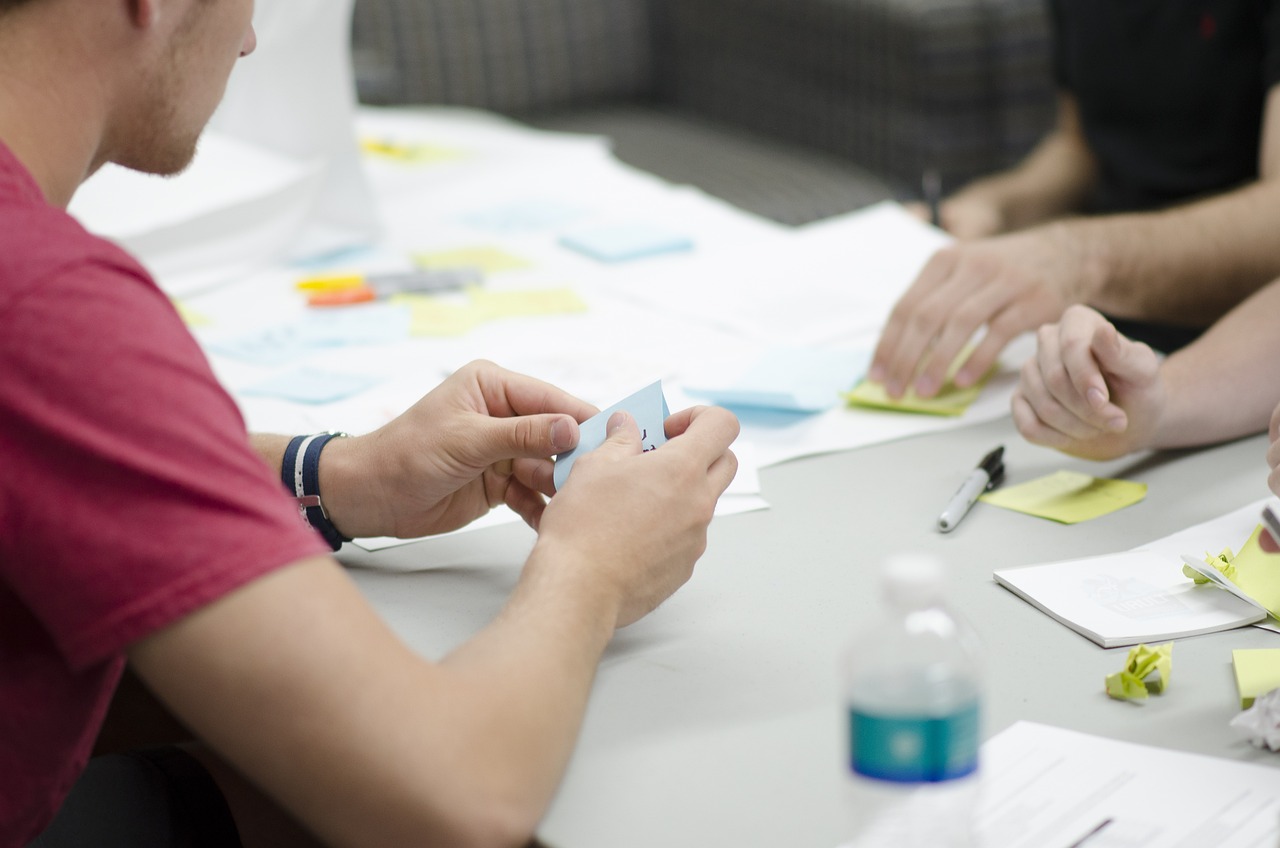
Bringing a Friend
When it comes to meeting someone from an online transaction in person, the phrase “safety in numbers” couldn’t ring truer. Bringing a friend along not only enhances your physical safety but also provides a layer of emotional support that can make the experience less daunting. Imagine walking into a café or a parking lot, and instead of feeling vulnerable, you’re flanked by a trusted companion. This simple act can transform a potentially risky situation into a more manageable one.
Having a friend with you can deter any ill intentions from the other party. Think about it: if someone knows that you’re not alone, they might think twice before attempting any shady behavior. Plus, it’s always nice to have someone to chat with, share opinions about the deal, or even help in negotiating terms. Your friend can also keep an eye on the surroundings, alerting you to anything suspicious.
Moreover, if things don’t go as planned, having a friend nearby can be a lifesaver. They can assist you in navigating any uncomfortable situations, whether it’s walking away from a deal that feels off or even calling for help if necessary. It’s like having a safety net; you know you’re not in it alone. In fact, some people even establish a code word with their friends to signal if they feel uncomfortable during the meetup.
In addition to emotional support, your friend can also help you assess the situation more objectively. Sometimes, when you’re excited about a potential deal, you might overlook red flags. Having a friend who can offer a second opinion can be invaluable. They might notice something you don’t, or they might just remind you to stick to your gut feeling.
So, the next time you plan to meet someone from an online transaction, consider these points:
- Choose a trustworthy friend: Make sure the person you bring is someone you can rely on and who understands the importance of safety.
- Communicate your plans: Let your friend know the details of the meeting, including the location and what’s at stake.
- Have a plan: Discuss what actions to take if the situation feels uncomfortable or unsafe.
In conclusion, bringing a friend to an in-person meetup is a simple yet effective strategy to enhance your safety. It’s not just about having someone to talk to; it’s about creating a buffer against potential risks. So, don’t hesitate to reach out to a buddy for support. After all, safety should always come first!
Q: Why is it important to bring a friend when meeting someone from an online transaction?
A: Bringing a friend enhances your physical safety, provides emotional support, and can deter any potential ill intentions from the other party.
Q: What should I communicate to my friend before the meetup?
A: Inform your friend about the meeting details, including the location, time, and what you’re planning to discuss or transact.
Q: How can I establish a code word with my friend?
A: Choose a simple word or phrase that you can use to signal discomfort or the need for help during the meetup without drawing attention.
Q: What if I feel uncomfortable during the meeting?
A: Trust your instincts. If you feel uncomfortable, it’s best to leave the situation. Having a friend with you can make this easier.
Frequently Asked Questions
- What are the common risks associated with online transactions?
When engaging in online transactions, it's important to be aware of risks such as scams, identity theft, and fraud. Scammers often create fake listings or impersonate legitimate sellers, putting your personal and financial information at risk. By understanding these threats, you can take proactive steps to protect yourself.
- How can I ensure safe transactions online?
To ensure safe transactions, consider using secure payment methods like escrow services and credit cards. Escrow services hold your payment until both parties meet their obligations, providing a layer of security. Meanwhile, credit cards often come with fraud protection features that can help you dispute unauthorized charges.
- What should I do to verify a seller's credibility?
Before making a purchase, always check the seller's reviews and ratings. Look for feedback from previous buyers and any red flags that might indicate questionable practices. A trustworthy seller will have a history of positive interactions and transparency in their dealings.
- How can I protect my personal information online?
Protecting your personal information is crucial. Adjust your privacy settings on social media and online accounts to limit exposure. Be cautious about sharing sensitive information and consider using two-factor authentication for added security.
- What are phishing attempts and how can I recognize them?
Phishing attempts are fraudulent messages designed to trick you into revealing personal information. Look out for suspicious emails or texts that ask for sensitive details or direct you to fake websites. Always verify the sender's authenticity before responding or clicking on links.
- What safety precautions should I take during in-person meetups?
When meeting someone for an online transaction, choose a public and well-lit location. It's also wise to bring a friend along for added safety. Meeting in a familiar area can help reduce risks and provide peace of mind.



















